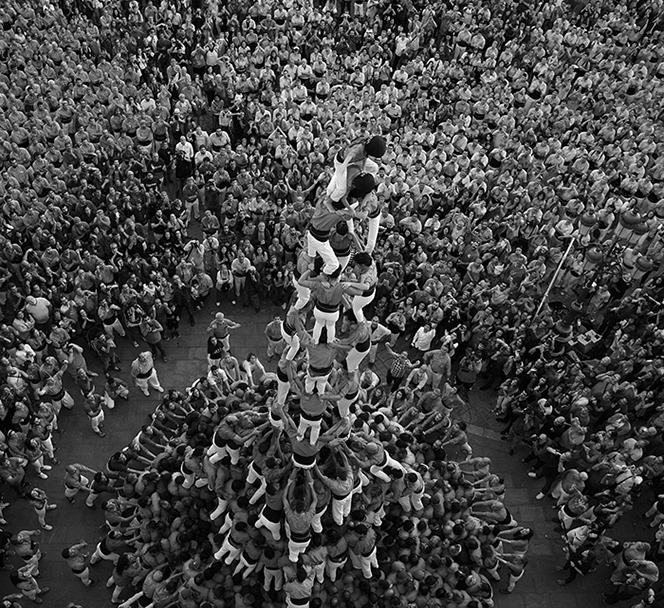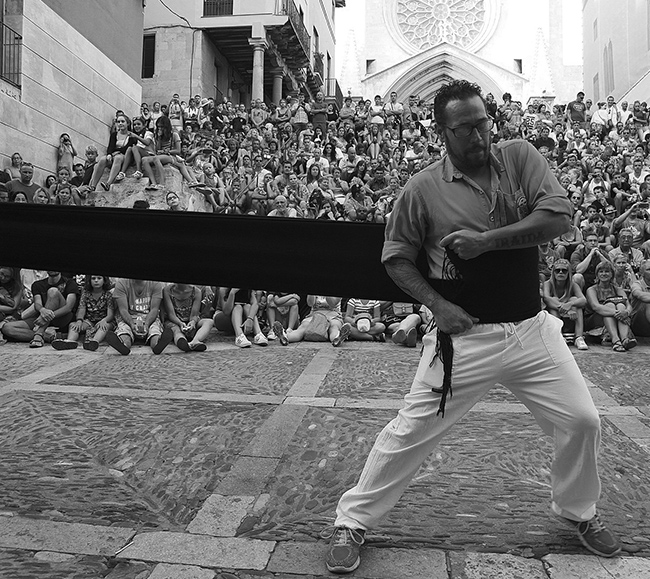
TEAMS
Human tower builders are grouped into colles: the different “teams” that make human towers. There are currently more than 70 of them. What differentiates them, apart from their names, is, above all, the colour of their shirts. Each club is a little world. We can find everything from clubs that are just starting out, making six-level human towers, to those that can manage what are known as the gamma extra or top-ranking constructions: the most difficult ones. Similarly, while some have less than one hundred members, the largest can manage to bring out almost a thousand shirts for the most important performances. All of them, however, share the basic essence: they are groups of castellers working together to achieve their challenges.
The colles are generally identified with a specific town, although there are some towns with more than one club. In Barcelona, for example, there are six. The university clubs, which have appeared recently, consisting only of students, lecturers and other university staff, are a special case.
You can check the list of clubs here.
ListHOW THE COLLES ARE ORGANISED
Human tower clubs have a double internal hierarchy. On one hand, the technical committee takes care of the composition of the different human towers and rehearsals for them: who forms each level; how the pinya, or base, is structured; which towers are attempted... The cap de colla —the leader or head of the club—, is the head of the technical committee, and usually has assistants such as the cap de pinyes and the cap de canalla (kids). In other words, the cap de colla might be likened to a coach in sport.
On the other hand, there is the management committee, led by the president. As in any association, there are also officers like the treasurer, the secretary, etc. The management committee takes care of the club’s institutional and organisational affairs: budgeting, contracting (coach hire, for example), organising events unrelated to castells themselves, etc.
CLOTHING
White trousers, a black waist sash and a red polka dot bandana are clothes common to all castellers. What differentiates one colla, or club, from another is the colour of the shirt and the badge. Each colla has its characteristic shirt colour, although, obviously, with the proliferation of new clubs year after year, almost all colours are repeated.


